I've hurt my AC Joint. What should I do?
by Margie Olds
The AC or acromio-clavicular joint is the joint between the clavicle (collar bone) and scapula (shoulder blade). It is commonly injured by falling and landing on the point of the shoulder, or landing on an outstretched hand.
There are three ligaments which keep the clavicle attached to the scapula.These are called the acromio-clavicular ligament, the trapezoid ligament and the conoid ligament (see figure below). Together the trapezoid and conoid ligament are called the coracoclaviclular ligaments as they both originate on the coracoid process.
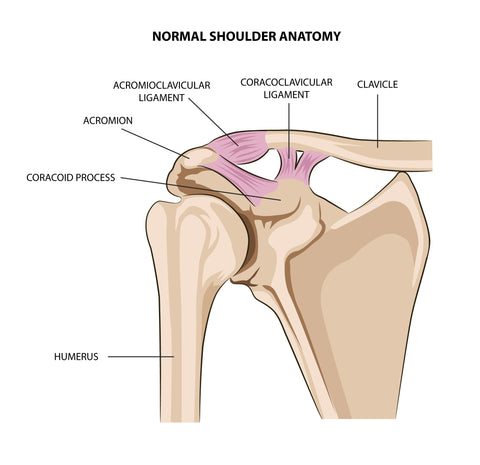
Injuries to the AC joint are graded according to the degree of ligament damage and the amount/direction of the clavicle displacement. Standard practice is to treat Grades 1-3 with physiotherapy and scapula strengthening, while ACJ injures of Grade 4-6 typically receive surgery. In some cases Type 3 injuries that do not respond to therapy are managed surgically. See below for the grading of ACJ injuries
GRADES OF ACJ INJURIES
A Grade 1 injury has a sprain of the AC joint capsule. Clinically there is localised tenderness over the AC join and painful movement, especially bringing your arm across your body.
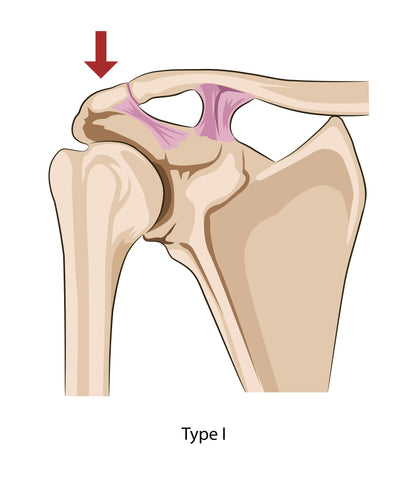
A Grade 2 injury has a rupture of the AC ligament and a sprain of the coraco clavicular ligaments (conoid and trapezois). Clinically there is a small bump in the top of the shoulder (also called a 'step deformity') and there is localised tenderness.
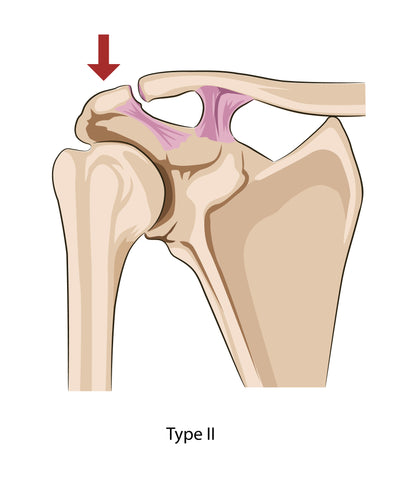
A Grade 3 injury has a complete rupture of the AC ligament, the conoid and the trapezoid ligament. There is a marked step deformity, it is less than a Grade 5 injury, but in the same direction

A Grade 4 injury again is a complete rupture of all three ligaments, and the clavicle has moved posteriorly (towards the back)
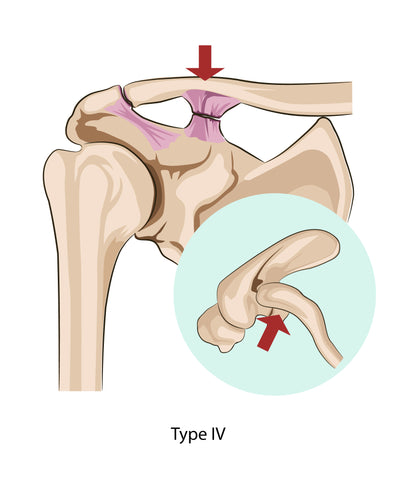
A Grade 5 injury is similar to a Grade 3 injury in that there is a complete rupture of all three ligaments, and the clavicle has moved superiorly. The amount of movement superiorly is more in a Grade 5 than in a Grade 3 injury
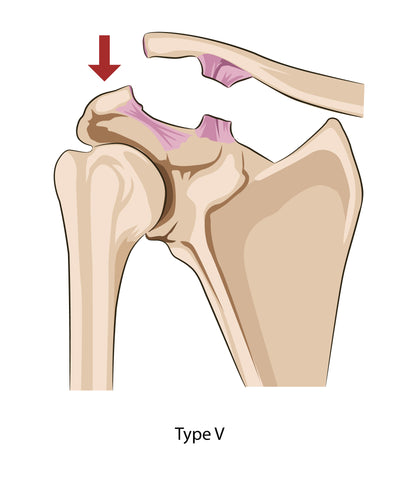
Finally a Grade 6 injury is complete rupture of all three ligaments of the AC complex, and the clavicle has moved inferiorly. This type is very rare.
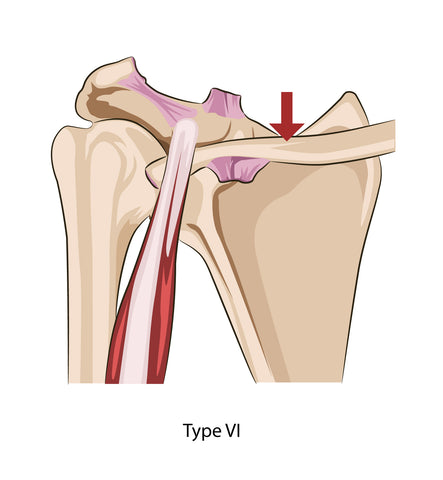
The grade of injury is important to know because is commonly dictates treatment options. Grade 1-3 injuries can be treated with physiotherapy and usually achieve good results, in that pain and function are restored. The normal time-frame for this is in the region of 4-6 week. Further scapula strengthening can help with healing by approximating the scapula to the clavicle. Grade 4-6 injuries usually require surgical management. There are a variety of surgical options undertaken for ACJ injuries - this will be the topic for another blog :).
The ACJ brace designed by Flawless Motion provides all over shoulder support. A padded strap provides protection for return to sport, and the additional straps can be used to support the scapula and the ACJ as the joint heals after injury. Click here to see the Flawless Motion ACJ brace




